After having our fill of Panglao town – with visits to both the church and our putative ancestral house, my Cloma cousins and I went off to the other end of Panglao island, to Dauis town, right next to the bridge that connects this island to the capital city Tagbilaran on the main Bohol island.
According to Regalado Trota Jose’s “Visita Iglesia Bohol” book, the present Dauis Church began to be built in 1863, but construction took many decades to progress, with the present neoclassical façade largely completed only in the 1920’s.
It being a weekday, the main entrance was shut,
so we went around to the right side to seek other means of access. From this side, one observes that the architectural style shifts from neoclassical to neo-gothic, as seen in the decorations on the belfry
and the windows on this side.
On this elevation as well is a large door to the side of the nave, unfortunately also shut.
Further down, however, is another large doorway, this one wide open,
which leads directly to the right-side transept of the church.
This enabled me to start exploring the interior, beginning with the right-side altarpiece.
Behind the sanctuary area was an array of images, hidden from the general view, including this (presumably) Virgen de las Flores,
this Immaculate Heart of Mary,
and this Saint Peter,
with its requisite rooster – taxidermied even, apparently.
Back in the sanctuary, I next take a look at the main altar, dedicated to Dauis’ patroness, Our Lady of the Assumption.
Both image and retablo are rather too small and unimpressive, in my view.
Near the altar are more Holy Week images presented for veneration, just as in Panglao church – this being early in the Lenten season. There was a mournful Dolorosa,
and a green-bearded
but otherwise devotionally-appropriate Nazareno.
Elsewhere in the checkerboard-tile-floored nave,
were a Pieta
and a large Crucified Christ.
Other articles of interest here were an elaborately carved and pierced confessional,
and the neoclassical pulpit.
Towards the rear of the nave were a couple of long pews, left over from an older generation before the newer pews in the rest of the nave were brought in,
and a no-nonsense, utilitarian, whitewashed carroza.
These were right in front of the main door,
which, as we saw earlier from the outside, was firmly closed.
From this end, one gets a good view of what the “Visita Iglesia Bohol” book refers to as the “basilica plan” – a high central nave flanked by lower-ceilinged aisles on either side.
And perhaps in emulation of several genuine Roman basilicas (basilicae?), the ceiling is painted not with religious scenes and holy figures as in Panglao (and in fact other Bohol churches), but with decorations simulating a Renaissance-style coffered ceiling.
But perhaps the most remarkable feature of Dauis Church is a small well, set in the floor right in front of the main altar and under the table in this next photo, that is supposed to have sprung miraculously when parishioners once had to seek refuge within the building during a pirate attack many many generations ago.
Supposedly the water remains fresh and potable, quite unlike the salty water from the sea just a few meters away. But only if well-meaning but clueless pilgrims don’t throw coins into it as if it were a wishing well!
Leaving the church the way we entered, our attention is called by this sign, directing us to a souvenir shop in the old convento at the back.
We’ll check it out later.
Elsewhere by the side of the church is what appears to be the parish office, unfortunately not sympathetically matched to the style of the rest of the structure.
The very back of the church, right behind the main altar and the area where we had earlier seen several holy images lined up, is what might be mistaken for another façade.
I suppose that this is through where the parish priest and other religious staff originally passed on the way to the church from the convento across the yard, which is not directly connected to the church building.
The convento itself is a large building with wrap-around exposed balconies, recently meticulously renovated.
Apart from the aforementioned souvenir shop, there is a coffee shop and a small museum on the ground floor, all set up by the Ayala Foundation, who are generous benefactors of the Dauis Church Complex.
The only part of the complex that we haven't really checked out is the other side of the large open space bounded by the convento and the rear of the church. Here, there is a hexagonal tower that was originally built by the Jesuits in the 18th century as a lookout against pirates.
Also overlooking the sea is this religious monument, with painted concrete figures of the Immaculate Heart, Saint Joseph, and other saints.
Actually it overlooks not the sea but the main island of Bohol, which is where our next stop will be.
Originally published on 8 May 2011. All text and photos copyright ©2011 Leo D Cloma. The moral right of Leo D Cloma to be identified as the author of this work has been asserted.

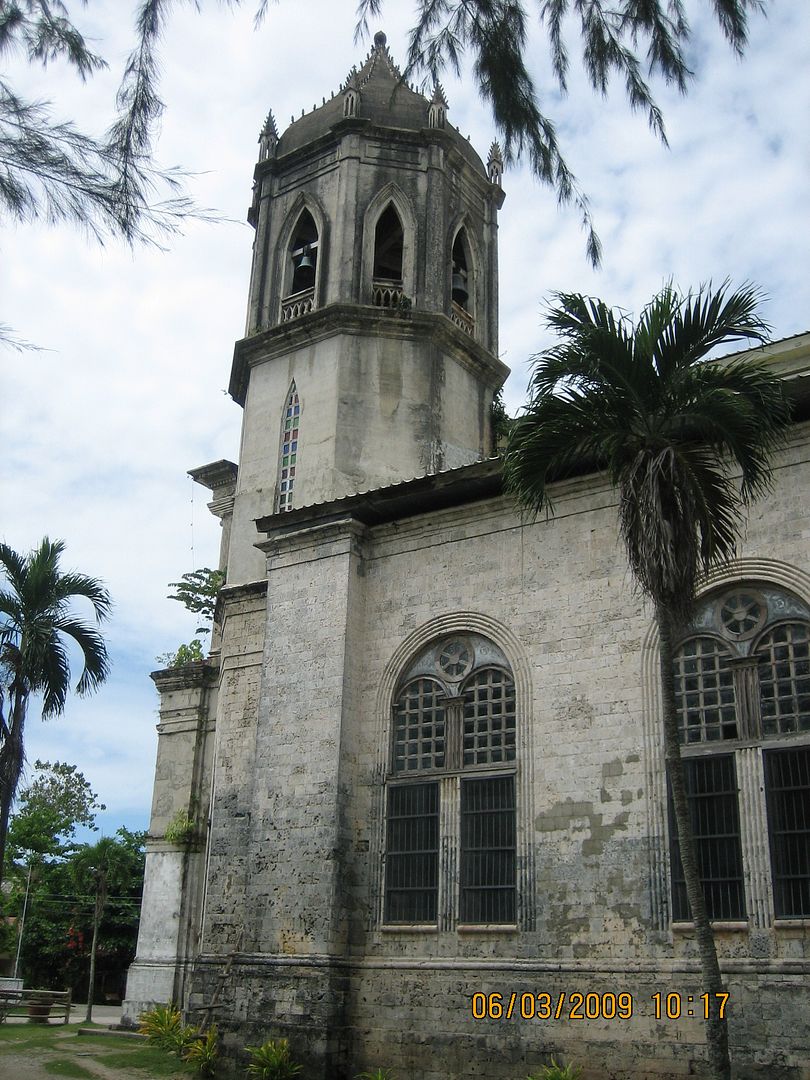
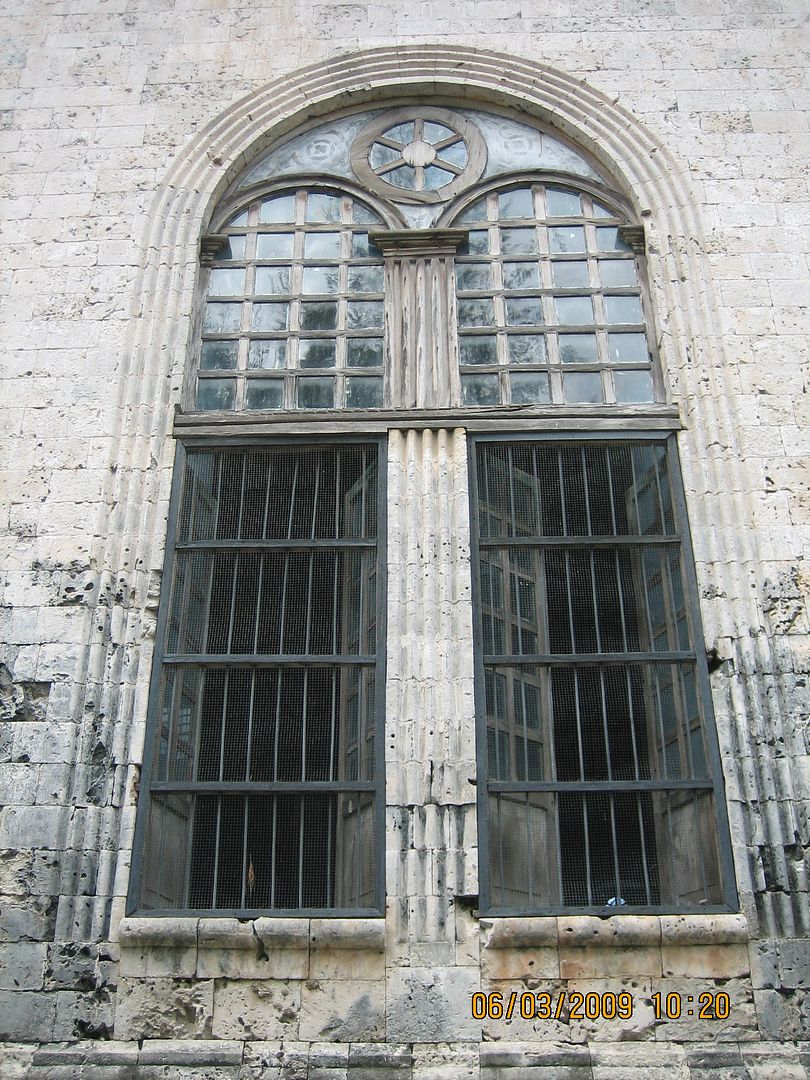



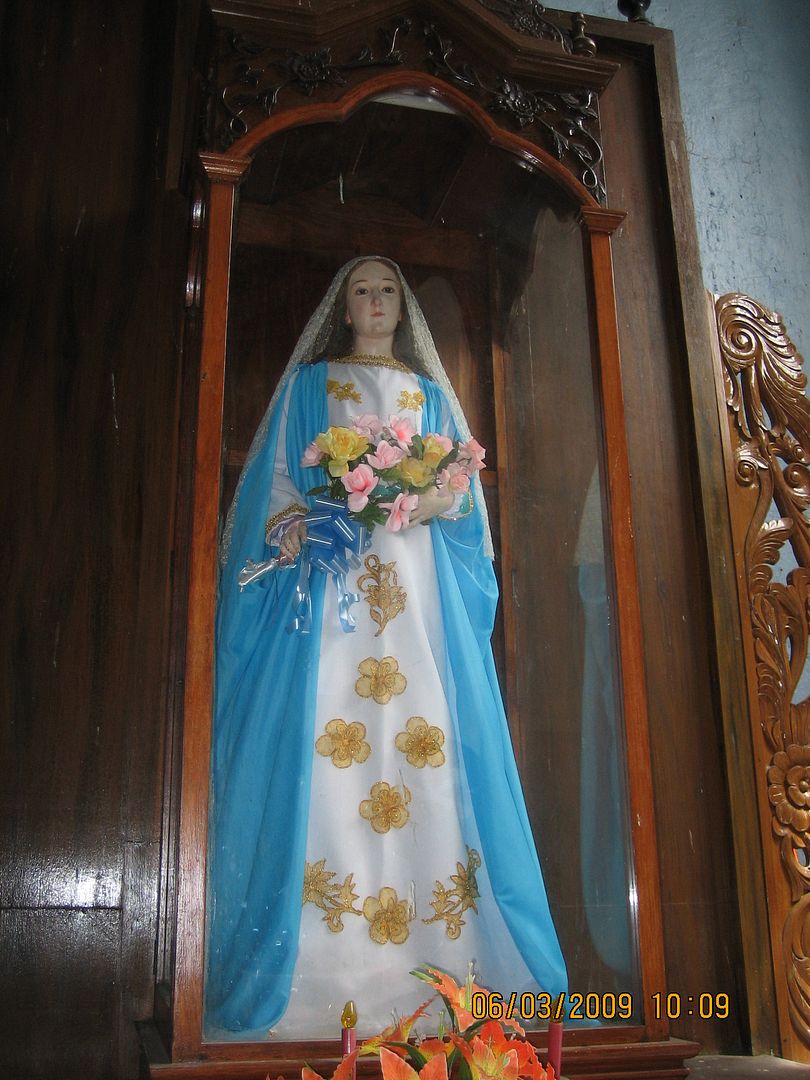
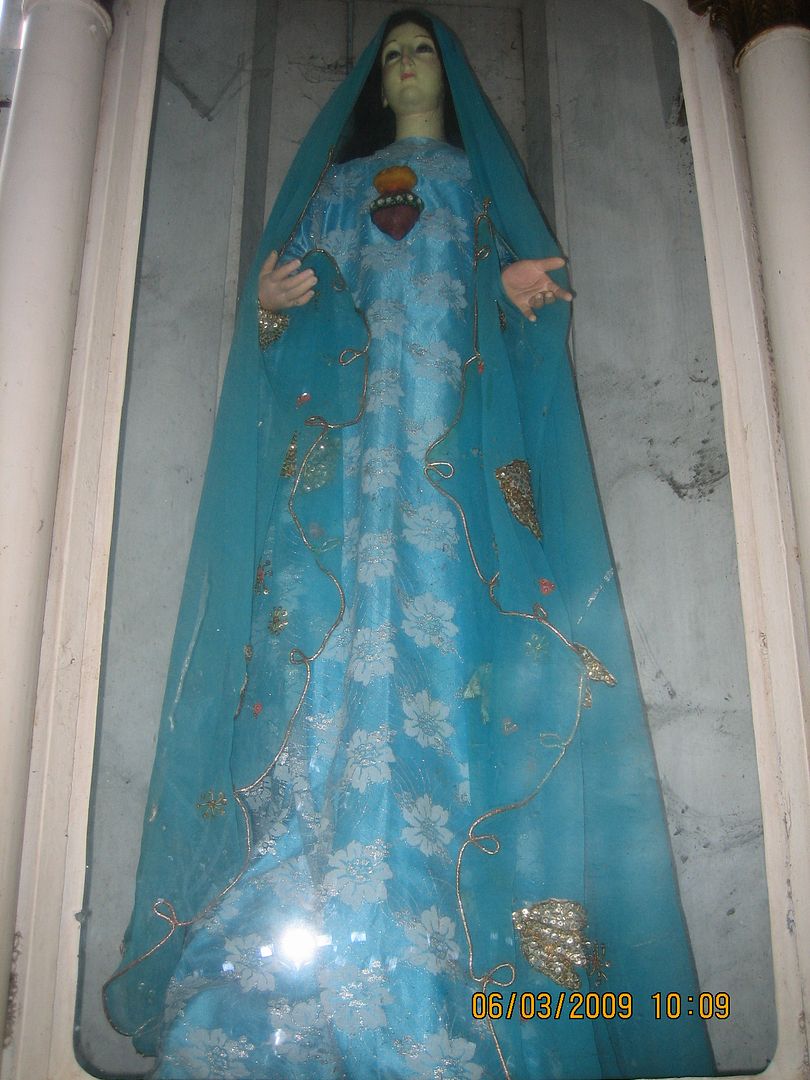

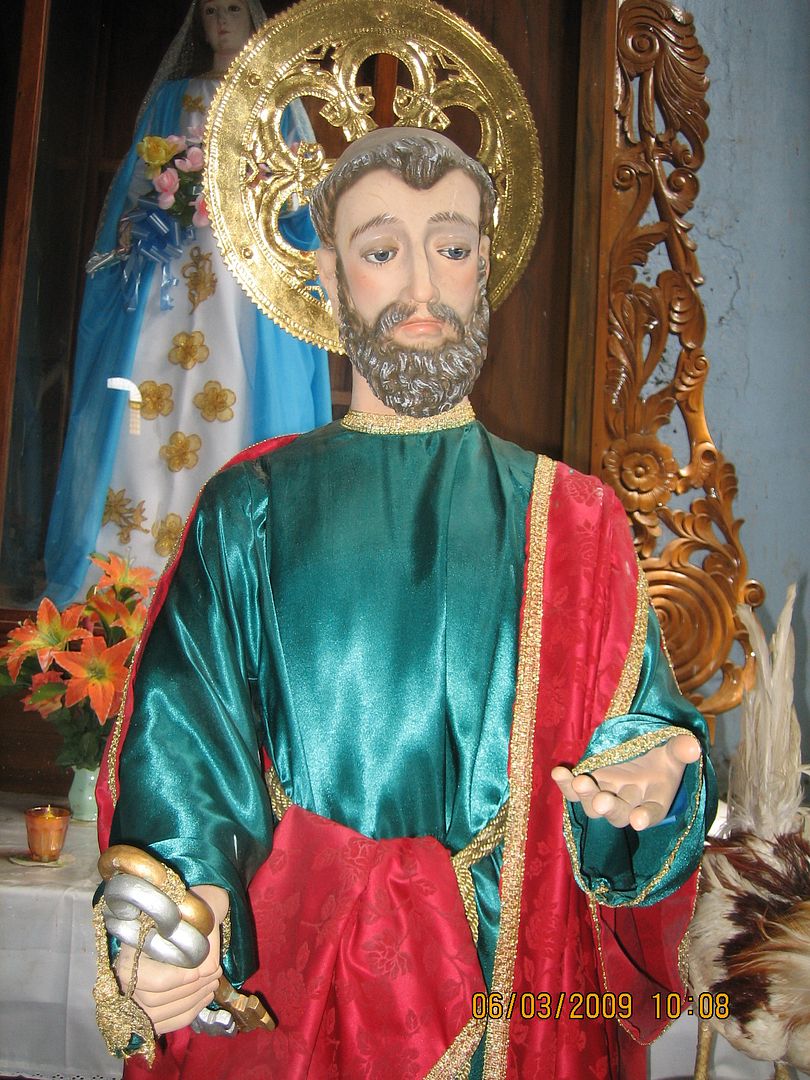
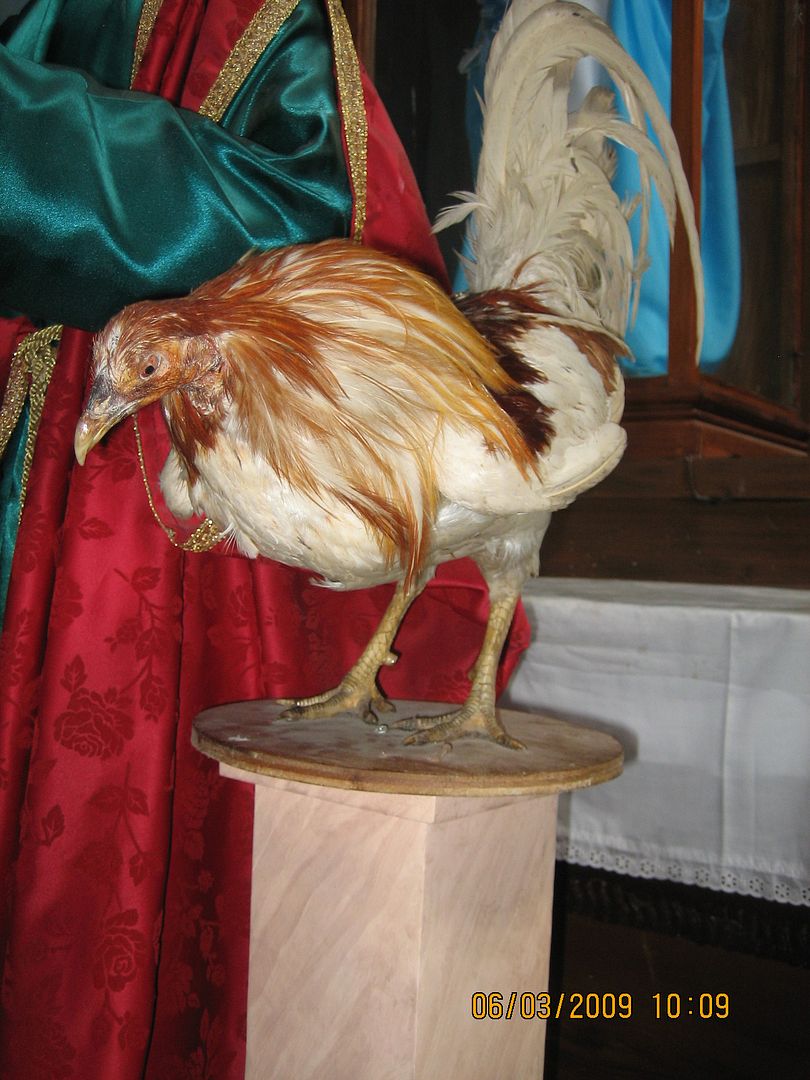

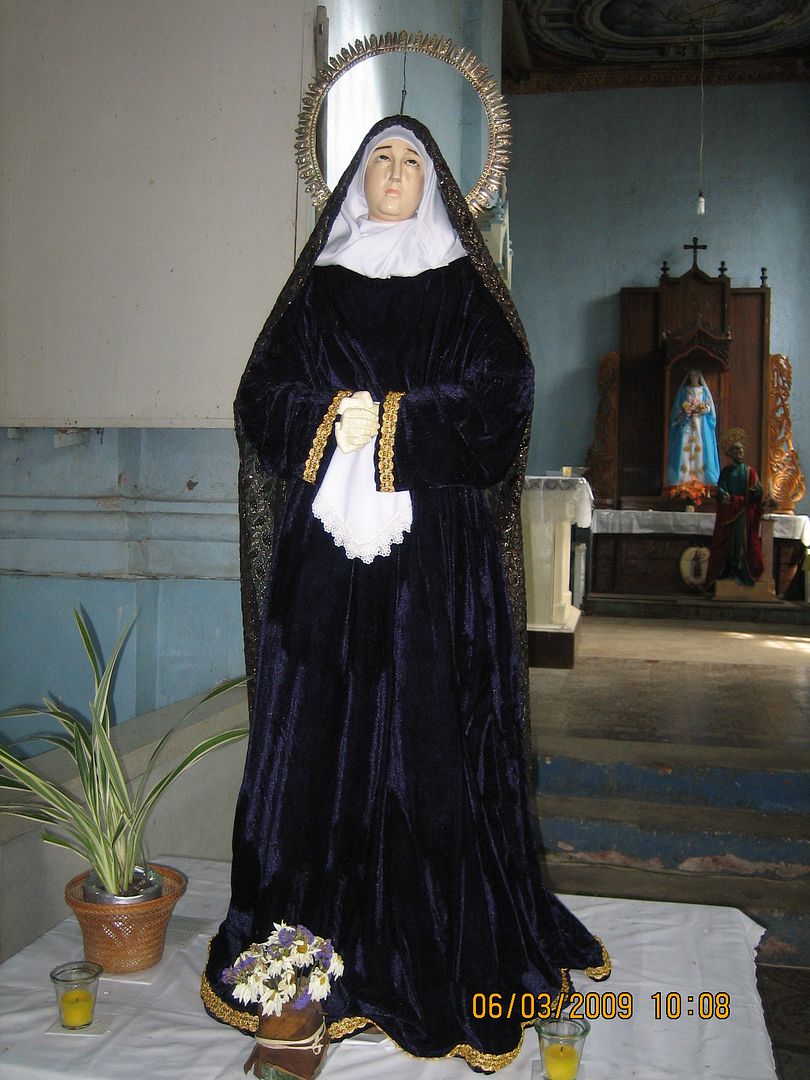
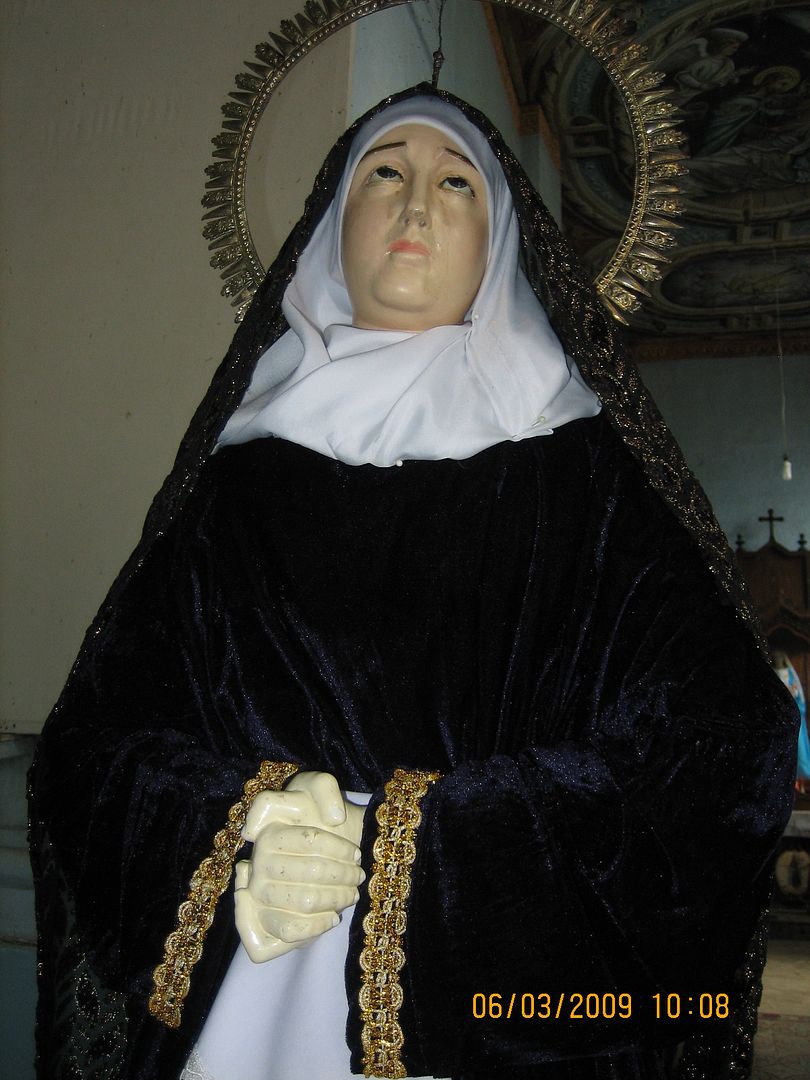
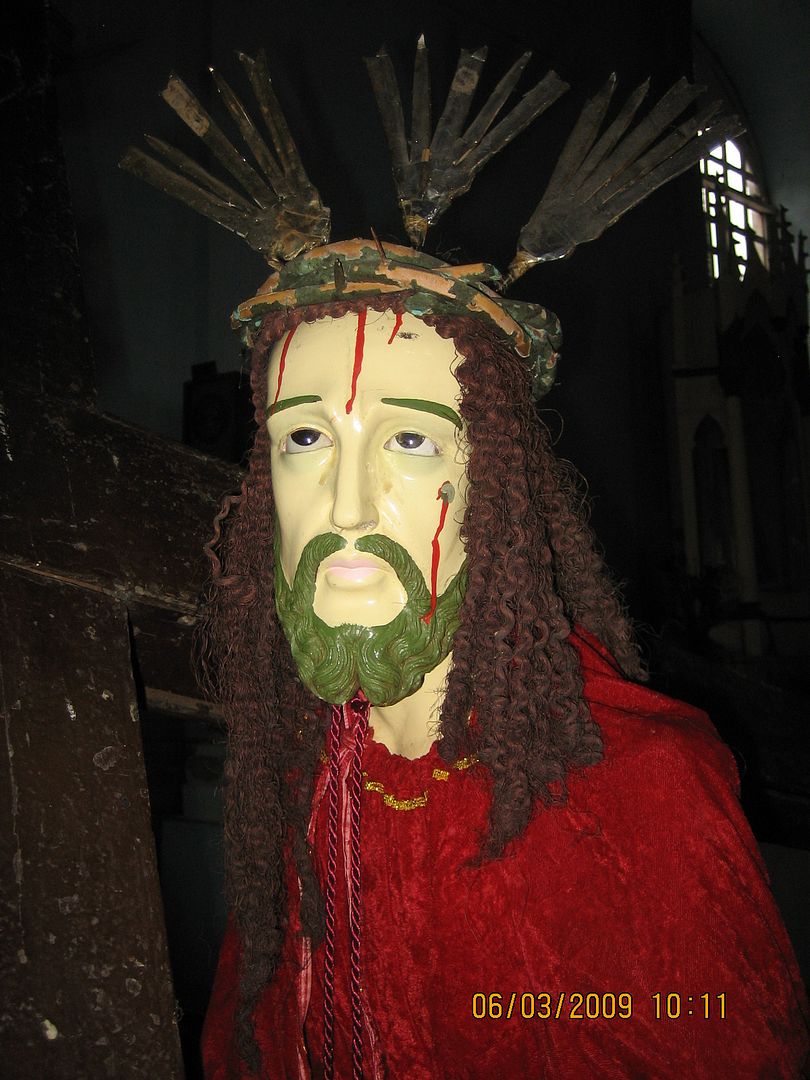

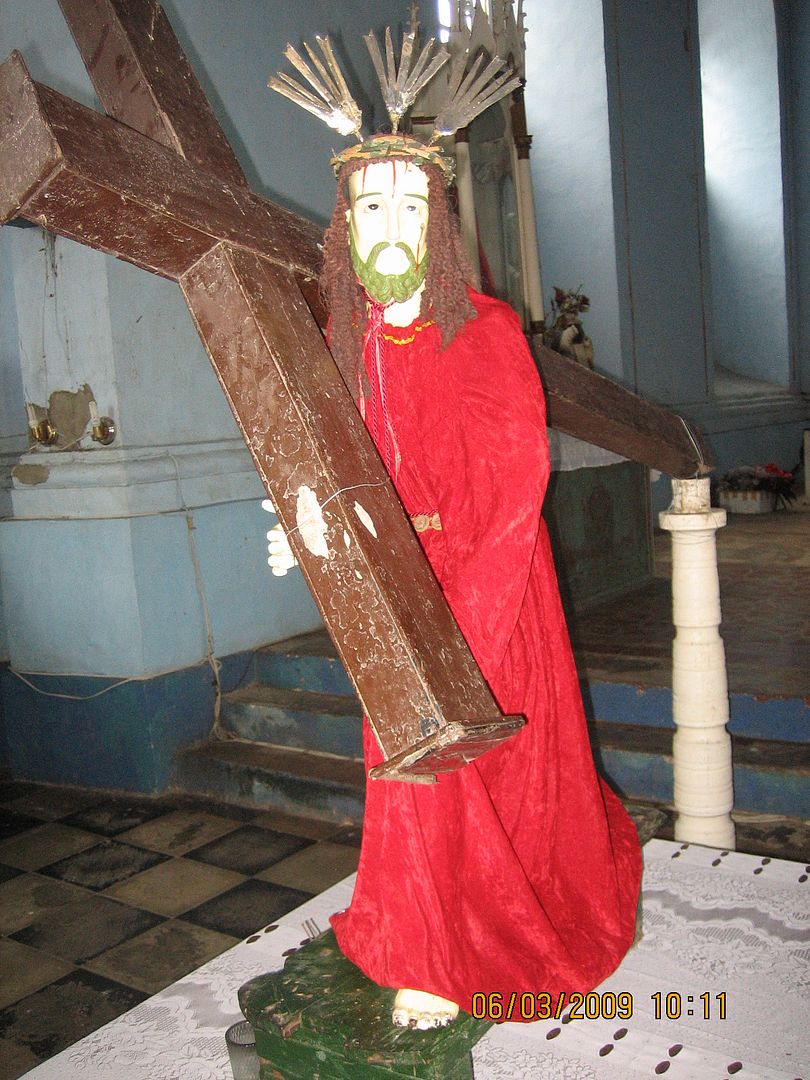
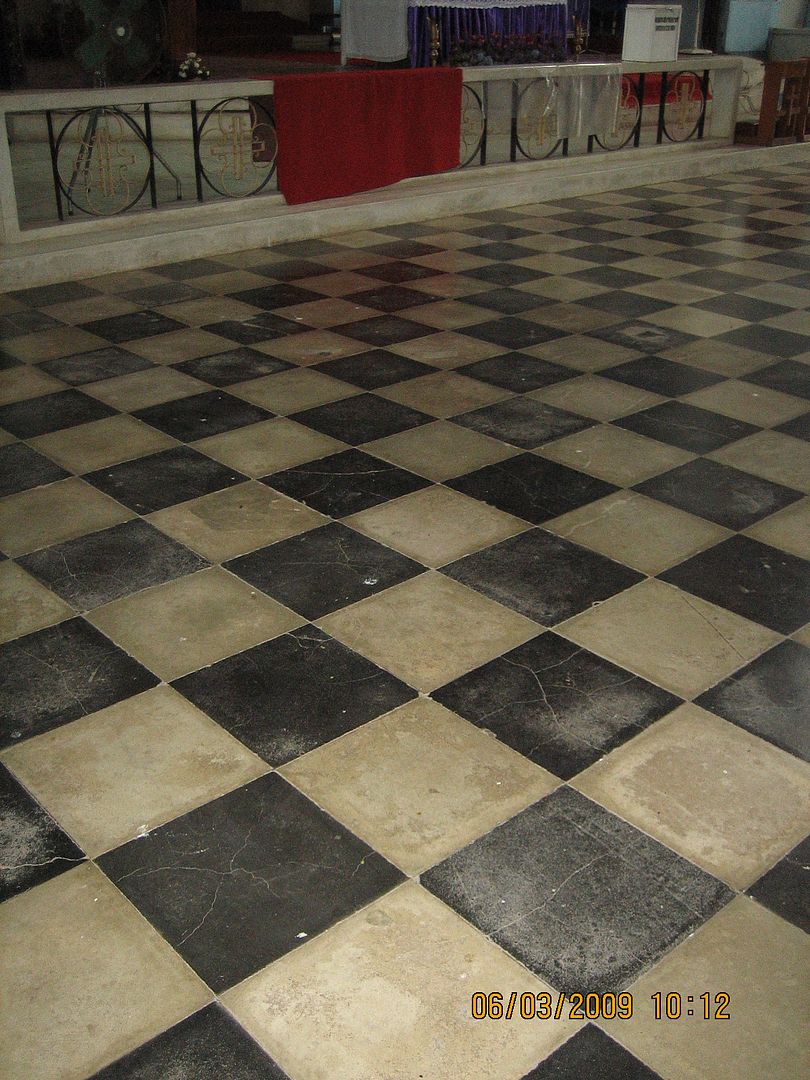
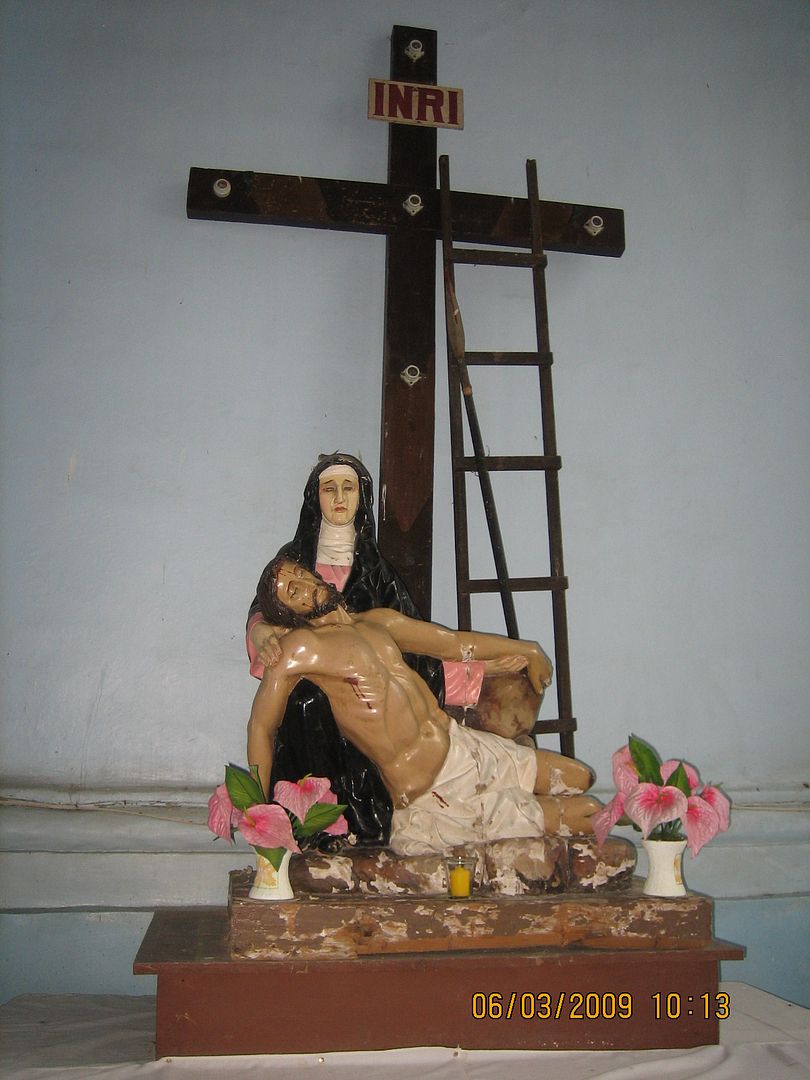
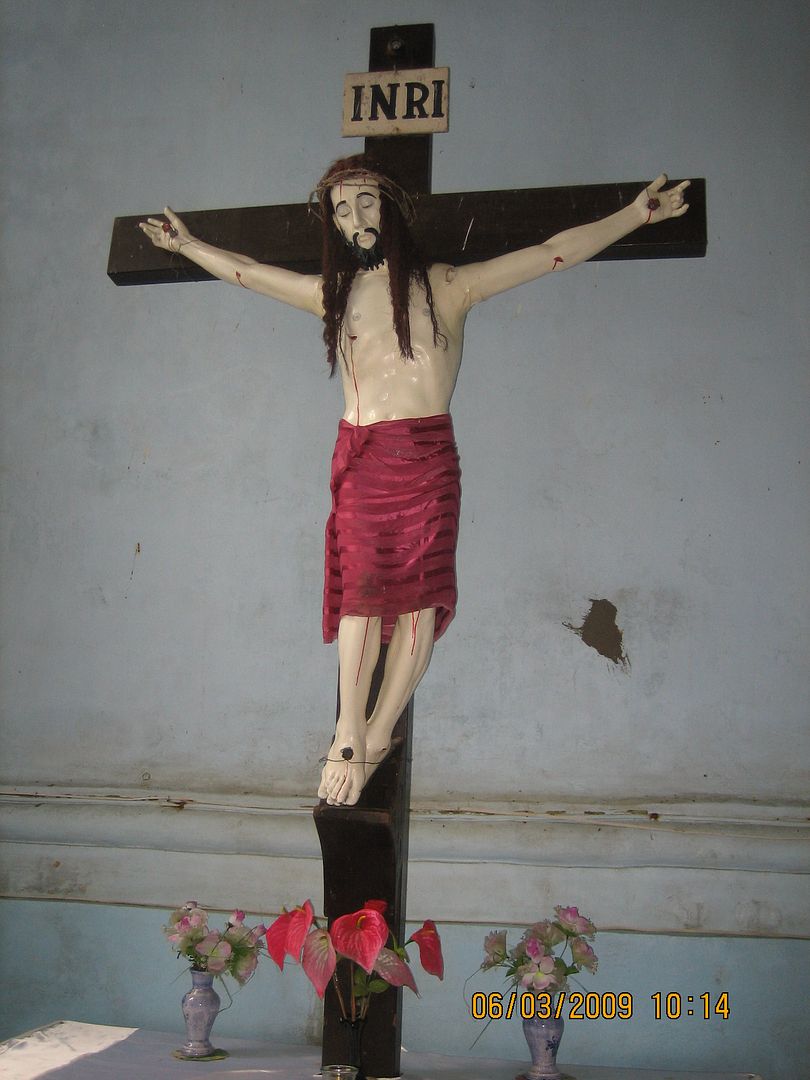
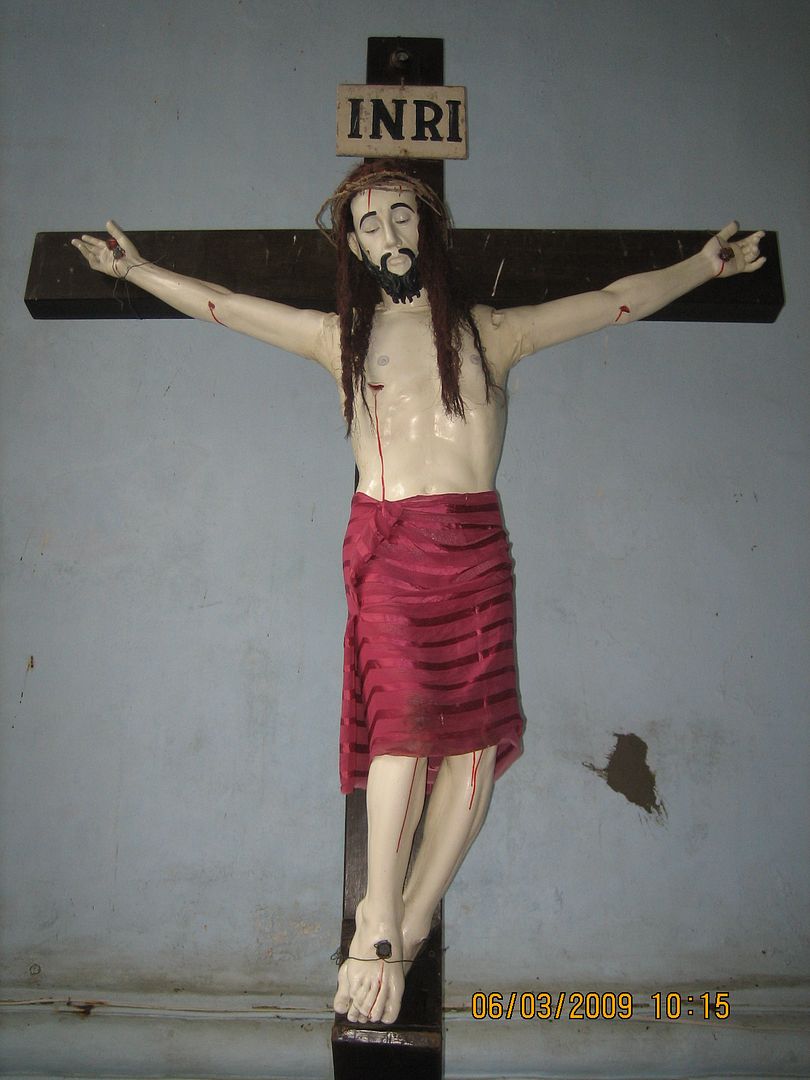
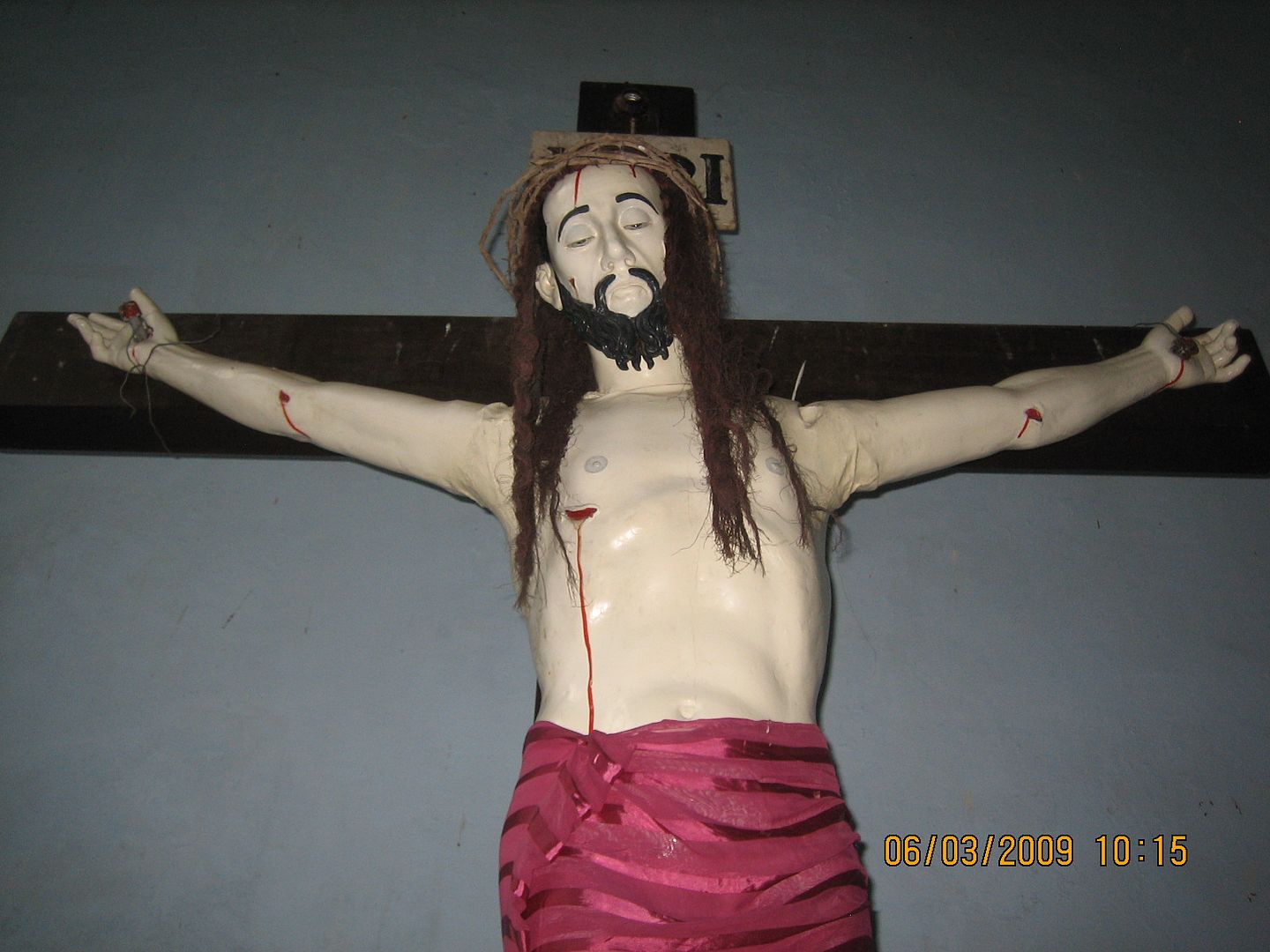
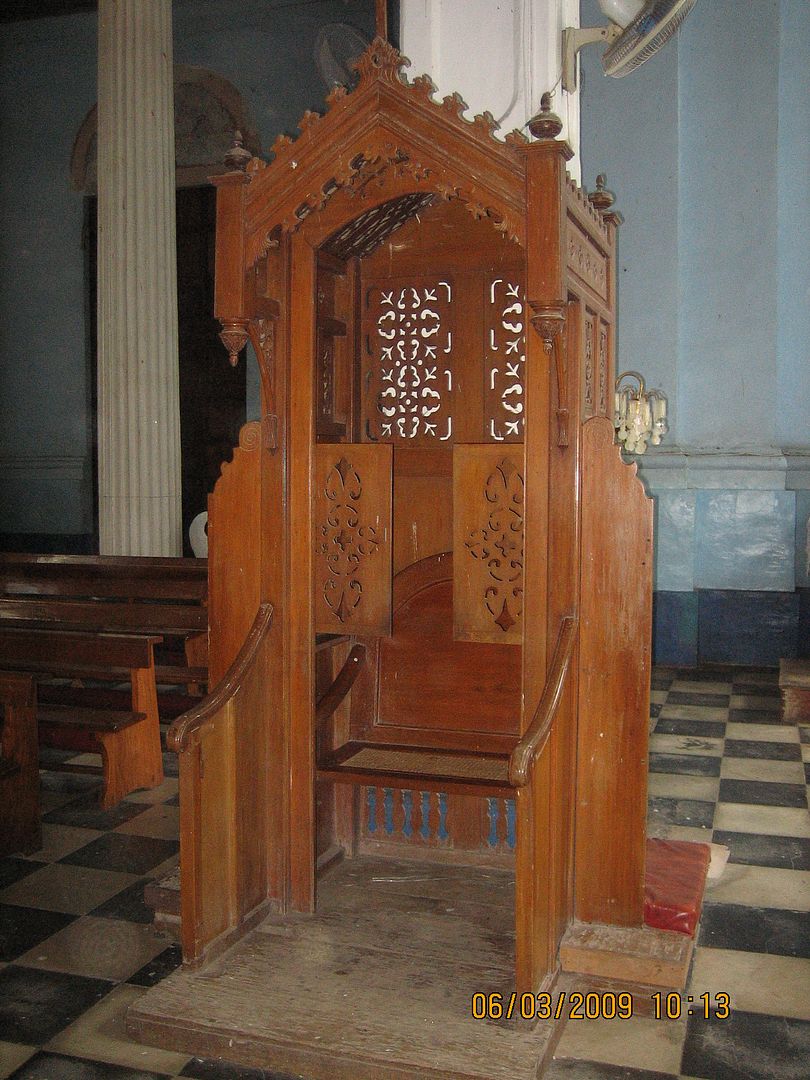
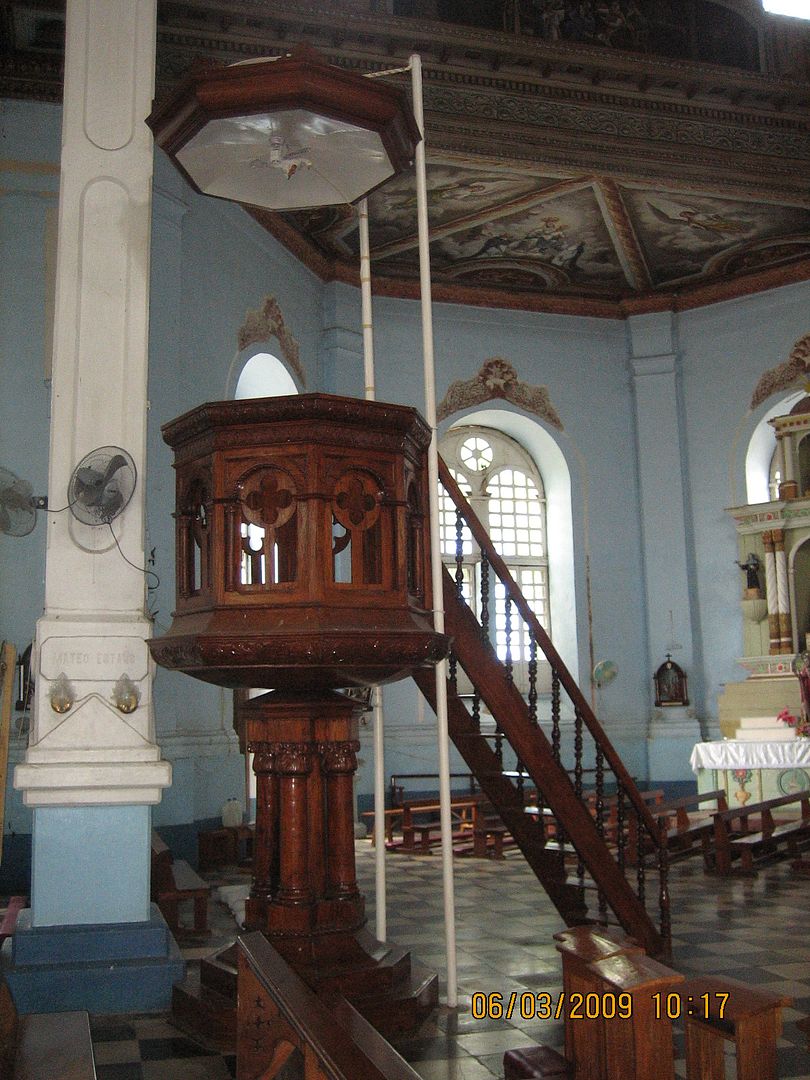

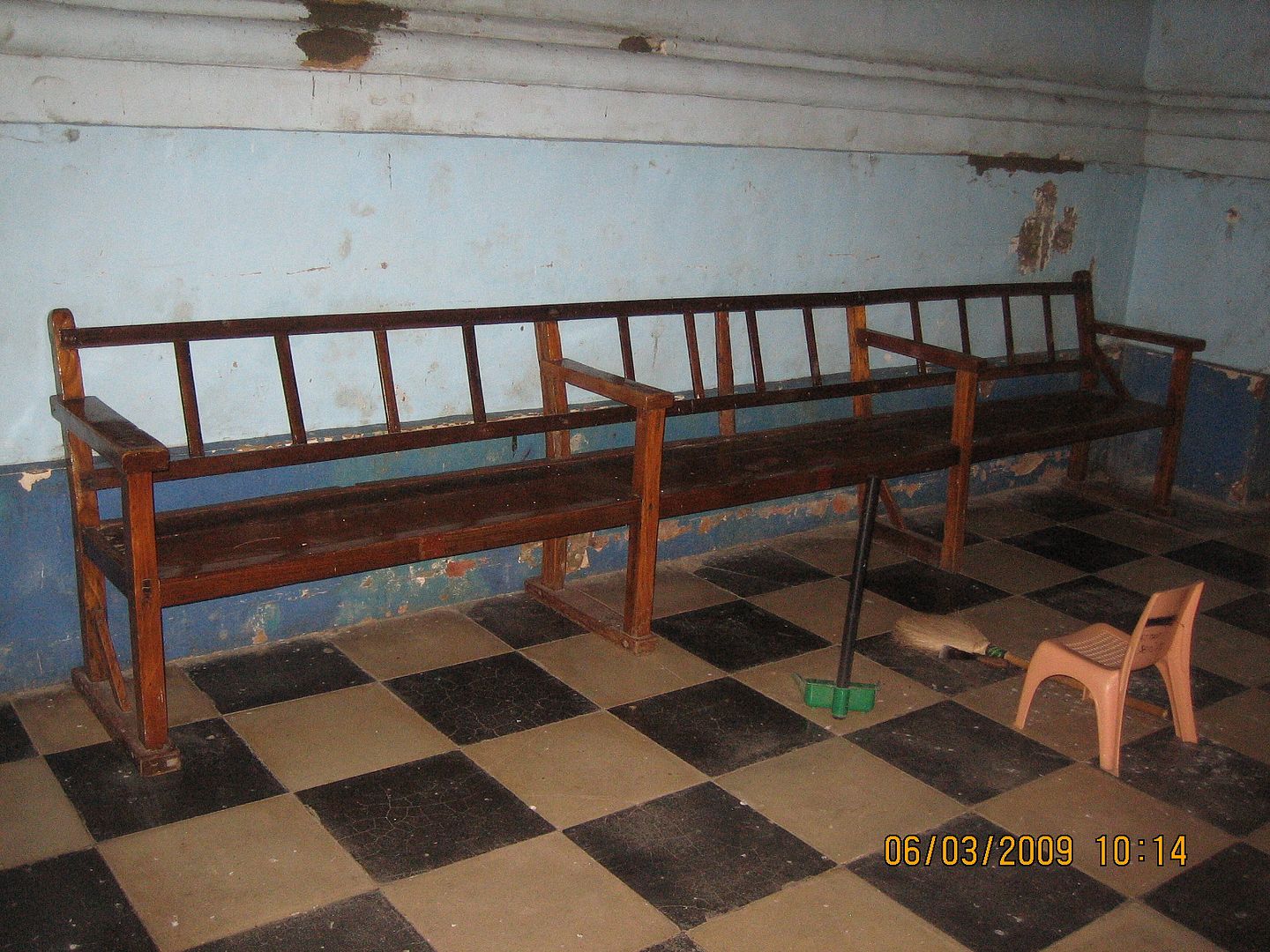

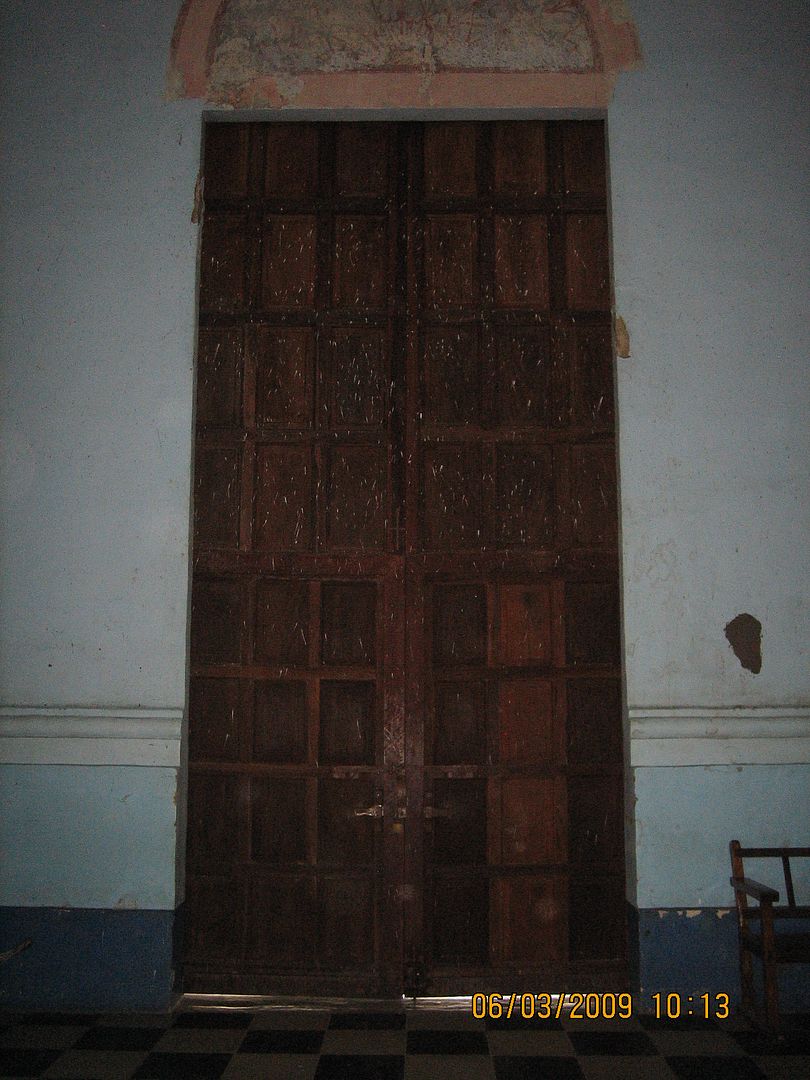


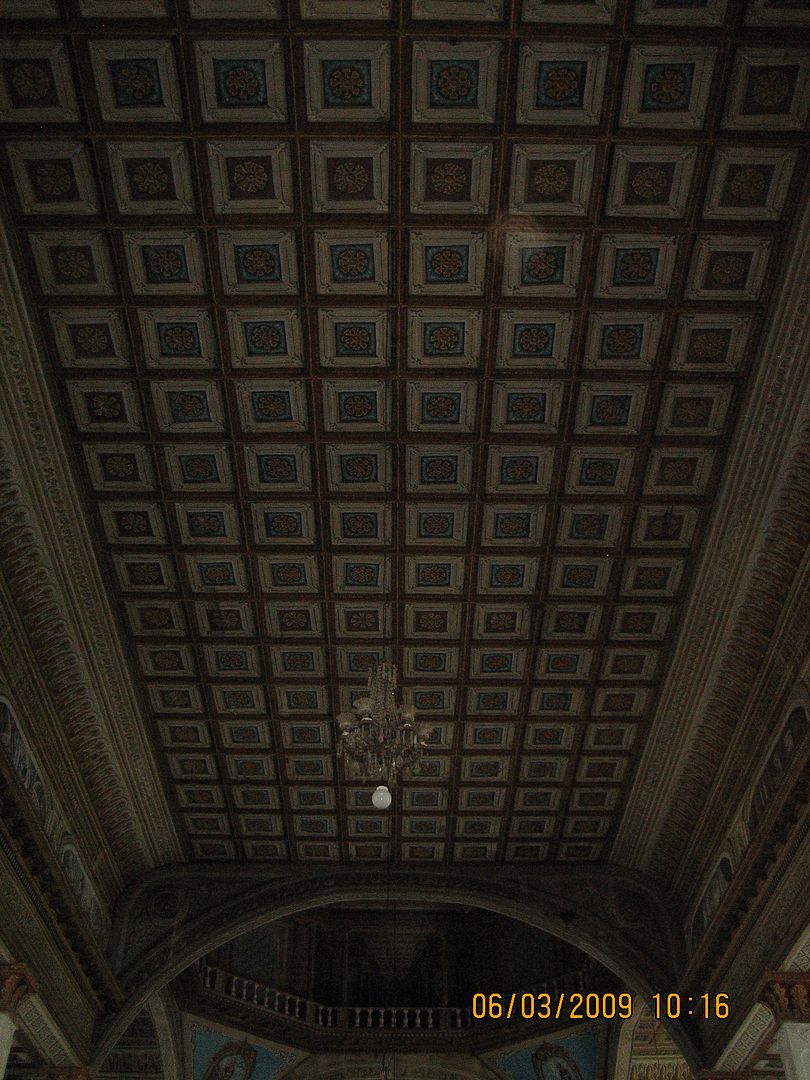
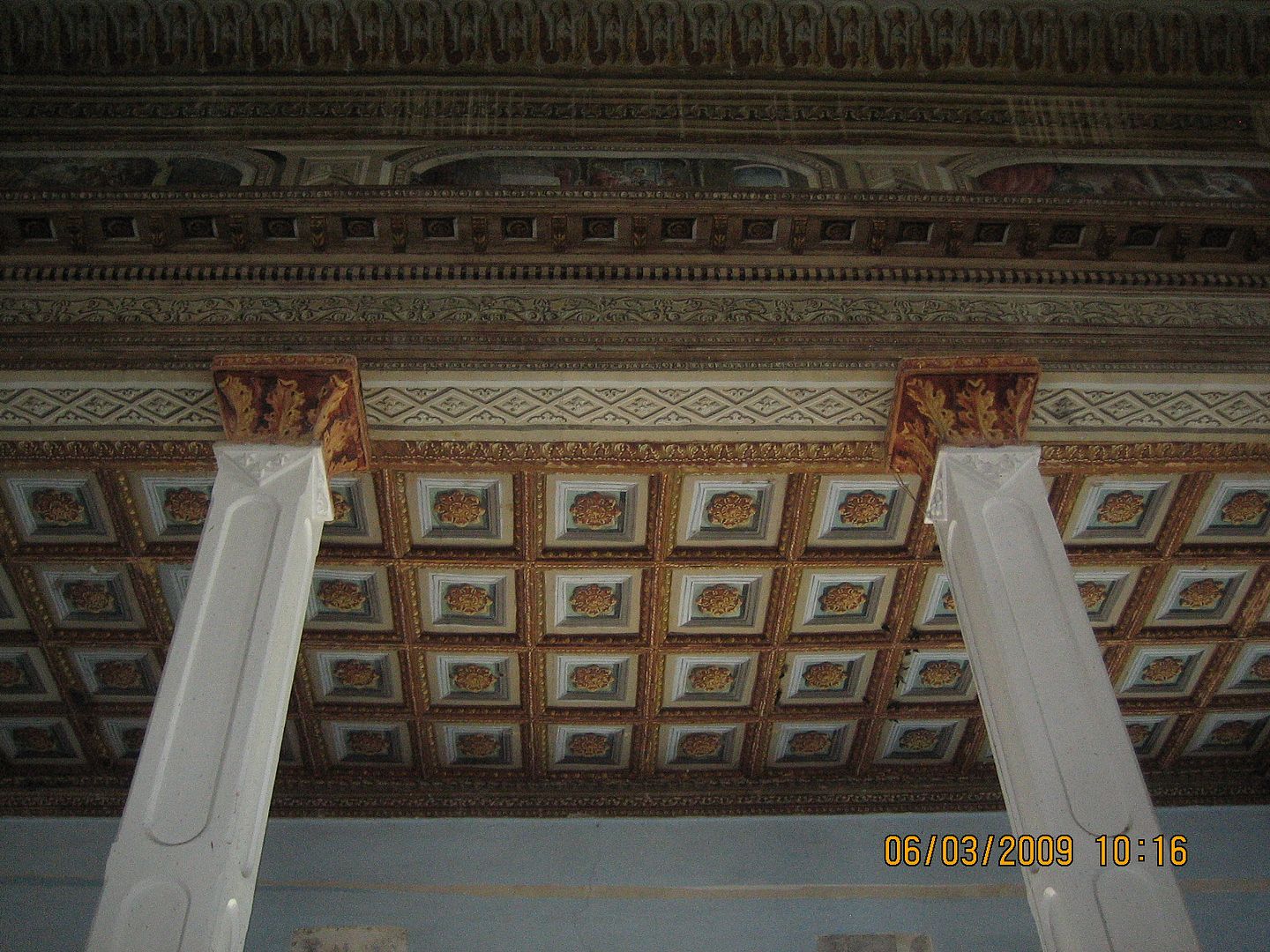
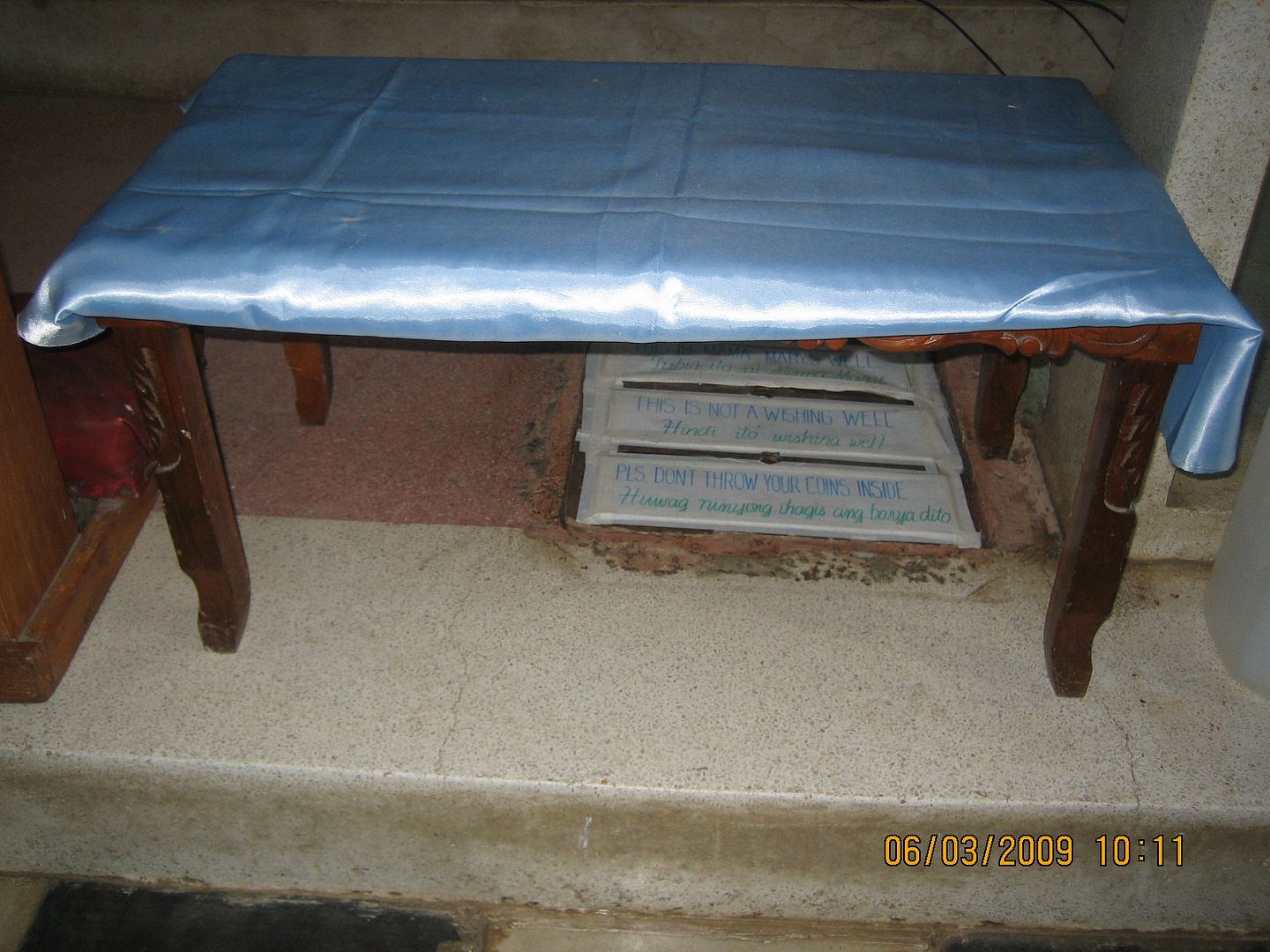
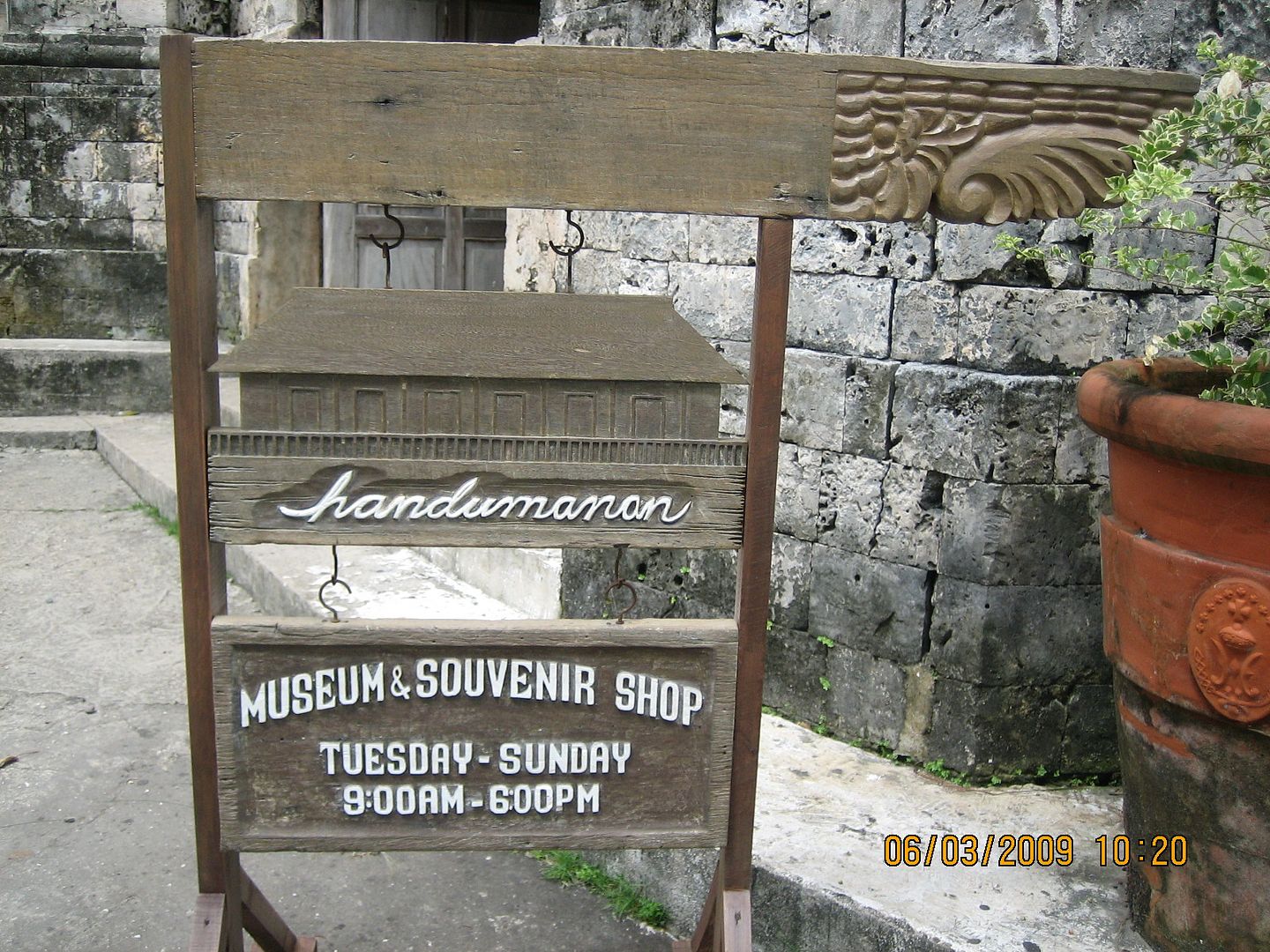
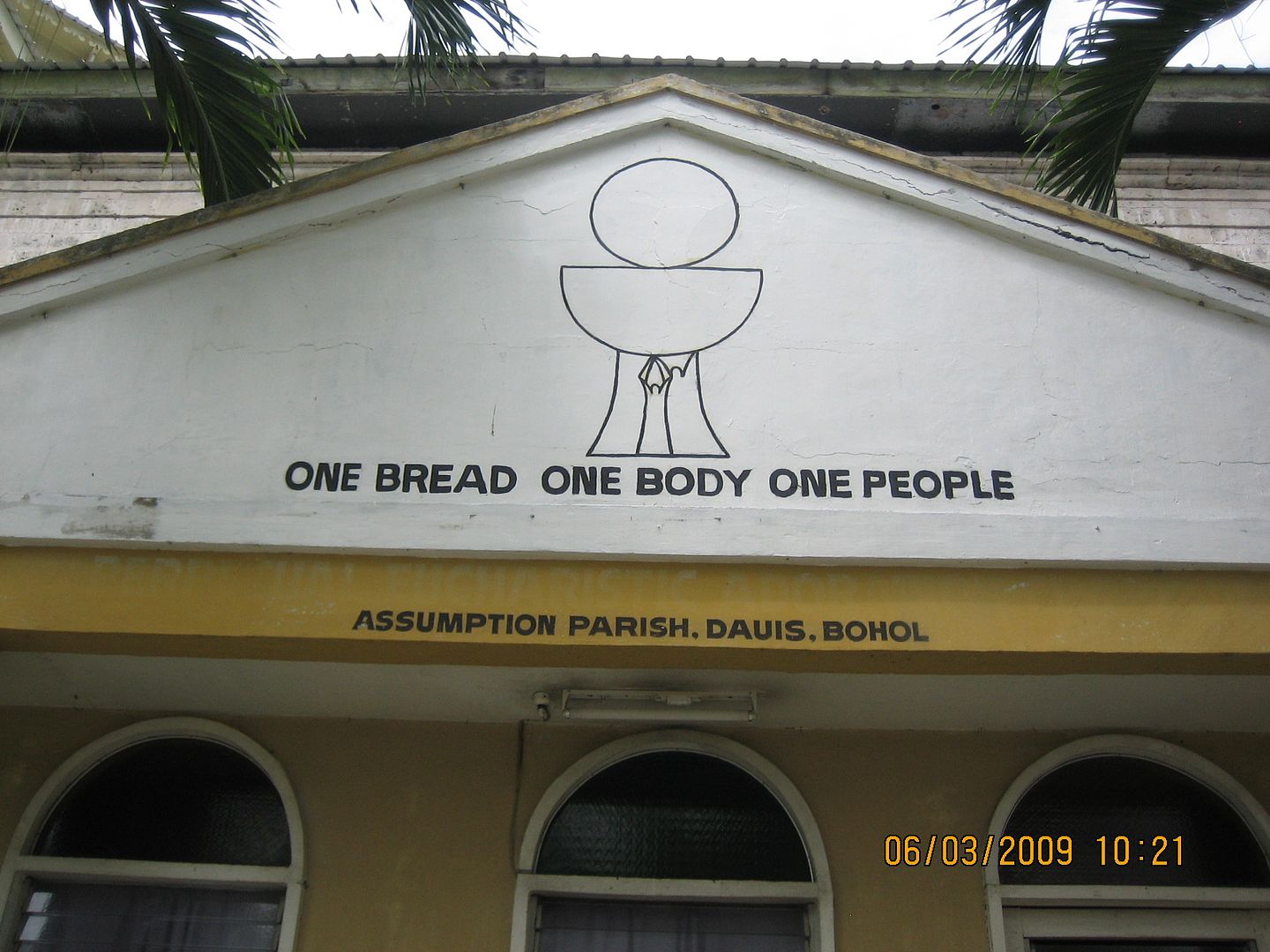
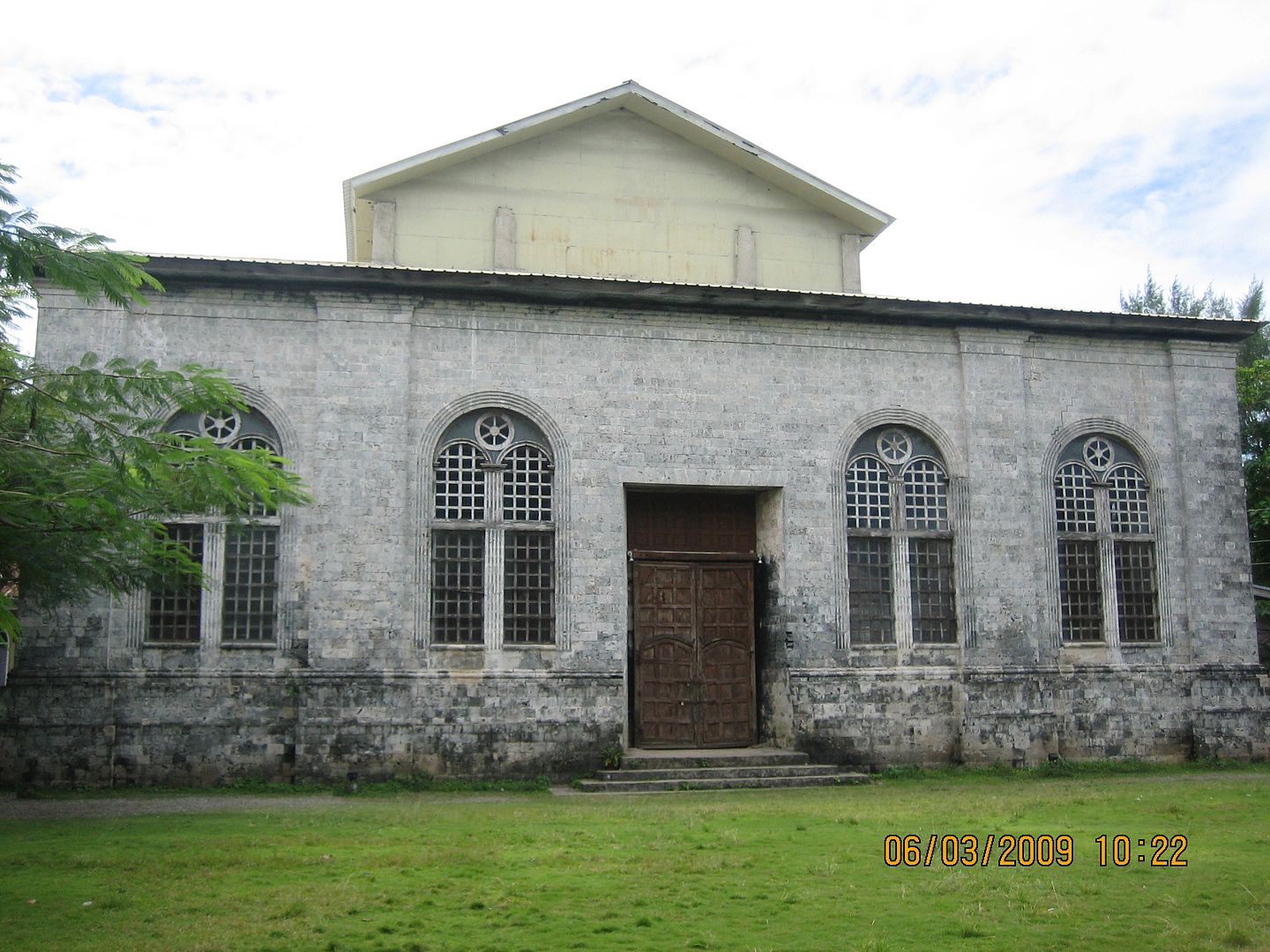
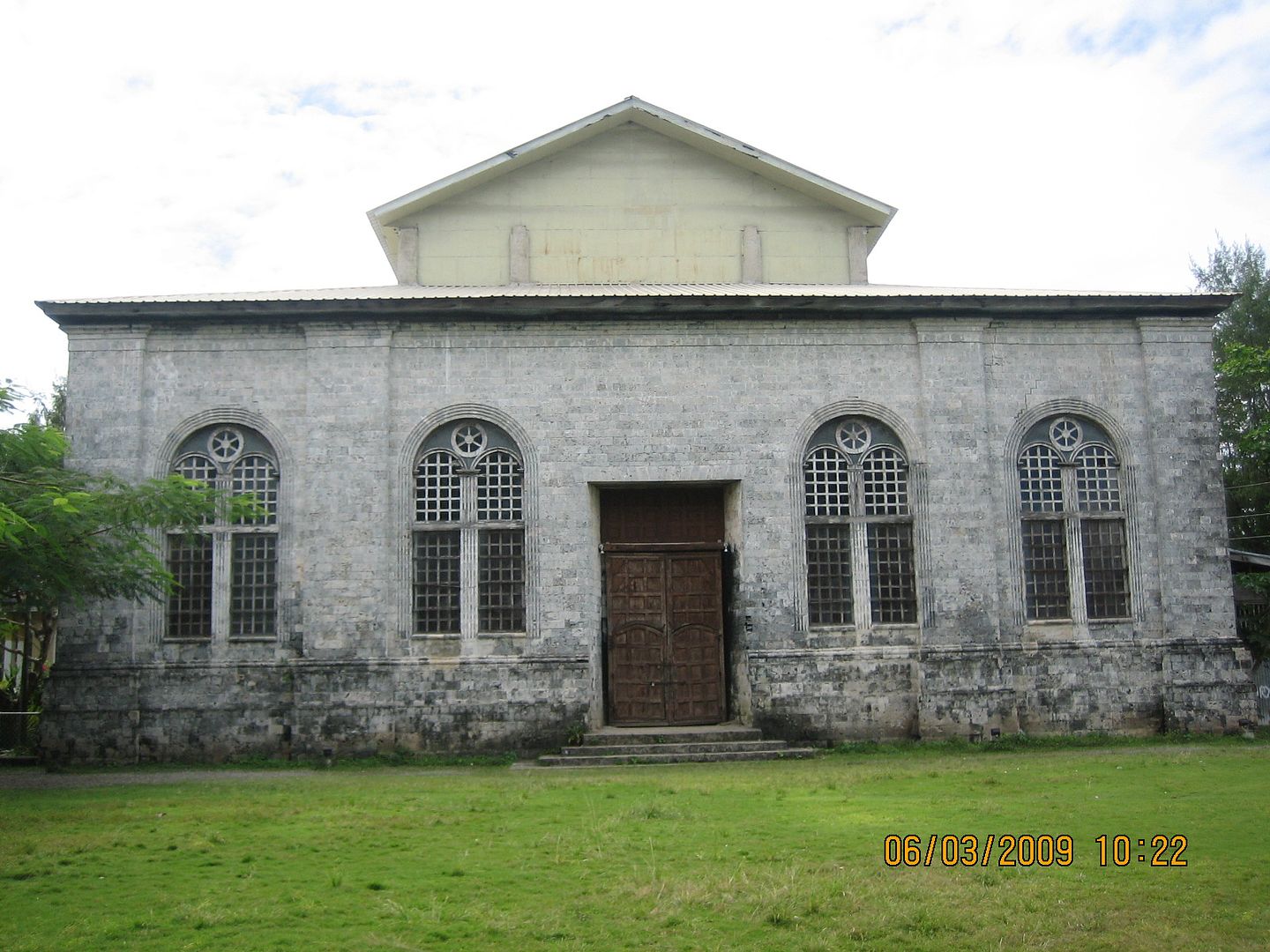


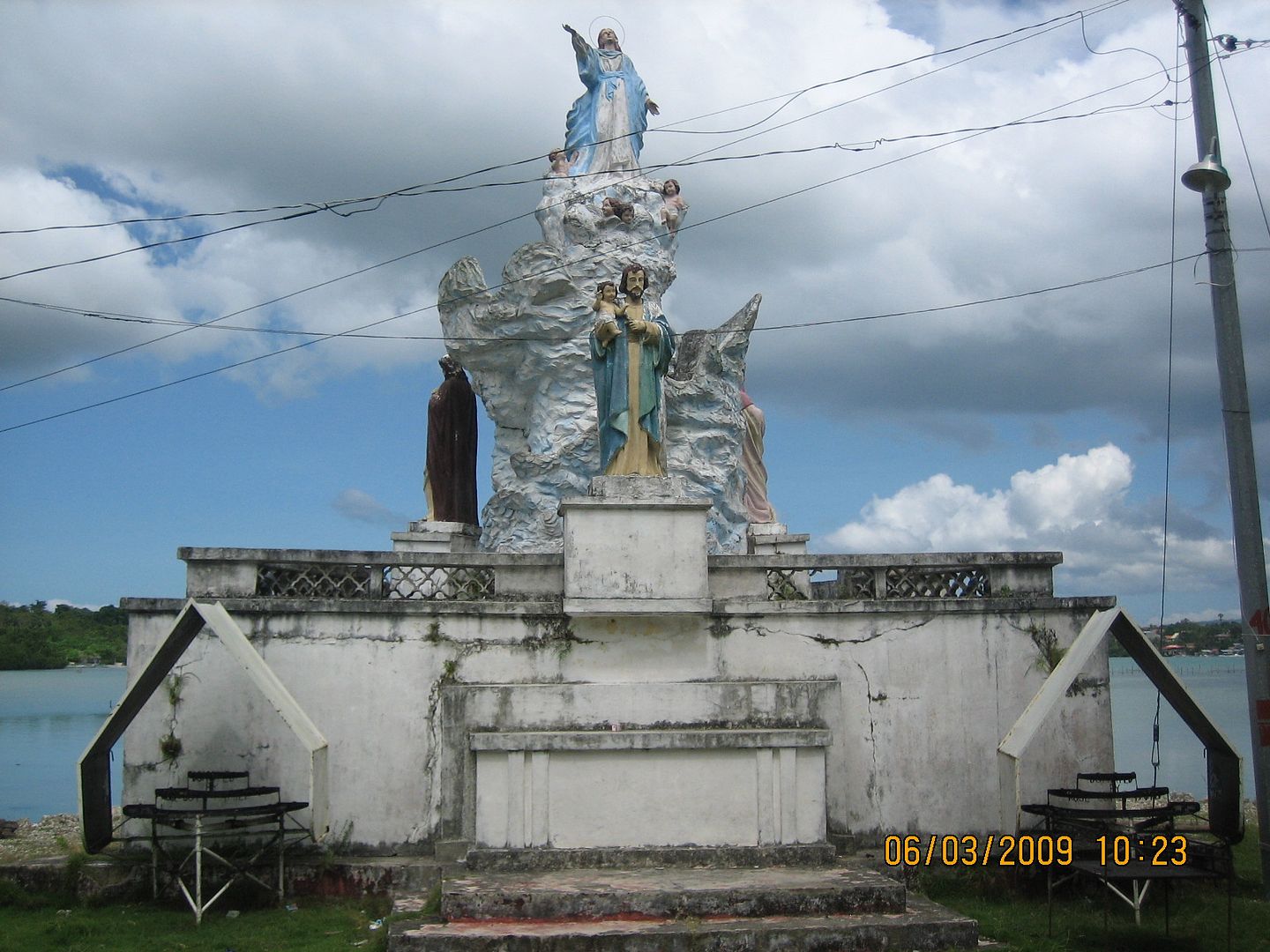
No comments:
Post a Comment